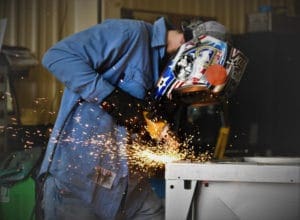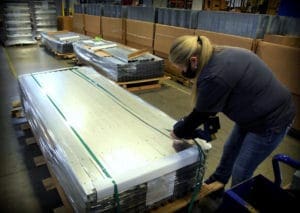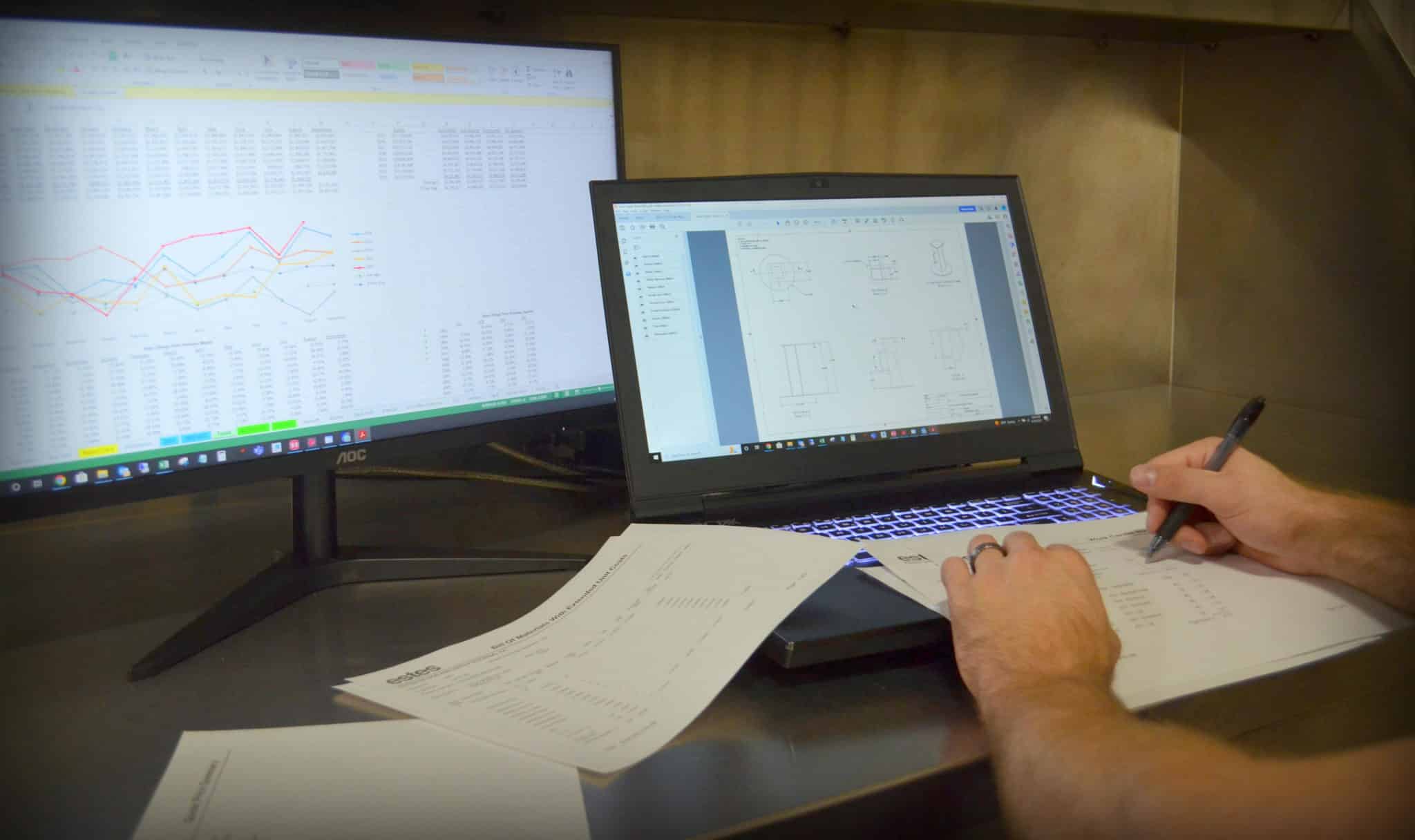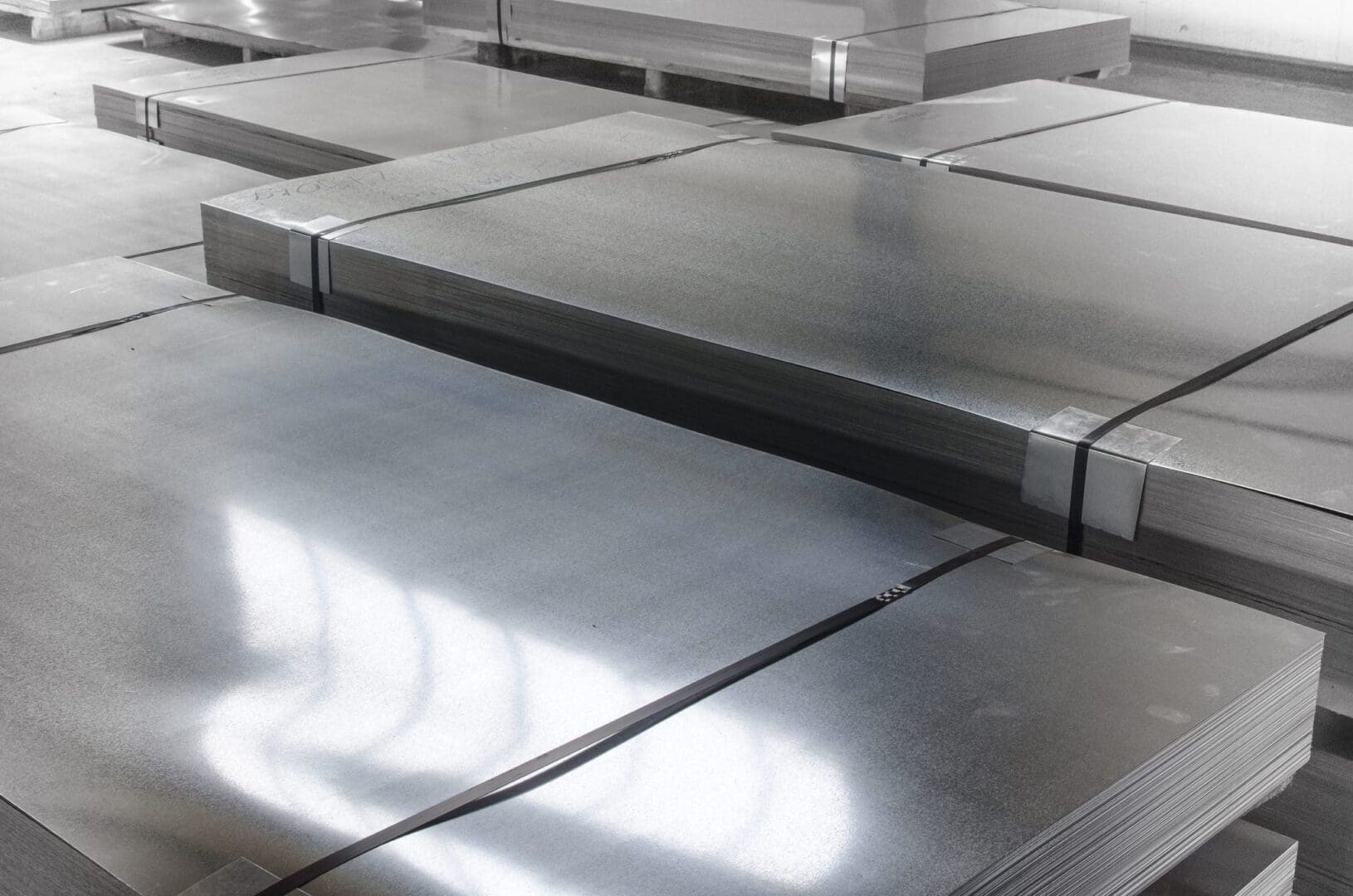One of the first steps in getting your sheet metal fabrication project into production is to set a budget and gather quotes from your potential fabrication partners. Before you choose a partner, however, you will want to understand the factors that influence the estimate given to you. There are numerous elements that affect a quote price, and understanding them will help you better manage your project and ensure you stay within budget.
Cost Factors
Raw Materials
The type of metal alloy you use for your project plays a significant role in the cost of your project. Depending on the end use of the product, you may not have much choice, but if you do, be sure to look into the options you have. Our website provides additional information on aluminum, stainless steel, and carbon steel alloys and discusses advantages/disadvantages, applications and cost saving design tips for each. In addition to exploring your options with different metal alloys, choosing standard sheet gauges and sizes rather than custom measurements will often yield a lower quote.
Also, be sure to have a general understanding of metal market prices when reviewing quote numbers. Metal markets play a large role in determining the cost of raw materials, and fluctuations can greatly impact your project price. For example, The Fabricator reports that hot-rolled steel coil rose substantially in late 2020 following the COVID-19 pandemic, reaching a record high of $1,955/ton, the biggest price jump in 15 years. Spring 2022 saw prices fluctuate between $1,000/ton and $1,500/ton, and analysts are expecting the market to continue steadily falling.
Complexity
The complexity of your design plays a large role in the cost, influencing the number of machines and processes that are necessary for production. A design with many part features, cuts, bends, and/or a complex assembly will cost more than a part with just a handful of part features and one or two bends. For example, extremely tight tolerances on a part may limit the equipment on which the part can run and force production to use higher cost methods to manufacture it and perform the necessary quality checks. In addition to this, unusual bend radii or unusual features on a part may require additional tooling, which drives the cost up.
There can be multiple ways to accomplish a feature; for example, you may be able to use fasteners rather than welding to join parts, but fasteners vary in function and price as well. All of these considerations (and more) come under design for manufacturability and assembly (DFMA), which reduces waste and reworks to maximize efficiency. Visit our Design Tips and Manufacturing Strategies website page to learn common design characteristics that must be considered in sheet metal design and view specific examples of design tips for DFMA.
 Labor
Labor
Your project requirements will determine whether development and production can be automated, or whether it will take human skill and expertise to complete, or more likely a combination of the two. For a highly complex or technical assembly, you will likely need an experienced laborer working on it, which is more expensive than a robot. But a simple design that allows a fabricator to employ the use of automation will help reduce costs.
Welding is an example of a process that can be done either robotically or manually. Robotic welding is typically best for simple, repetitive welds on a large scale, while manual welding is better for more technical or highly varied welds.
Quantity
Quantity is also a factor in cost. A large order will typically have a price reduction per unit. Also, if there is a significant quantity of the same part, the order can be run through the process without having to reprogram or set up machines, saving time and money. However, if the parts are highly varied, there will be added time for programming and machine setup.
Finishing
The finishing processes for your parts will also affect your quote. You may not have much choice on this factor depending on your project needs, but potential finishing options include powder coating, metal plating, anodizing, galvanizing, sand blasting, grinding, polishing, and hot blackening.
Welding is a common process that typically requires finishing, though not always. MIG and TIG welding use a filler metal to weld a joint, which typically results in splatter or build-up in unwanted areas. This excess material must be removed through post-weld grinding and finishing processes. By contrast, laser welding uses a focused, brief heat application and no filler metal, so there is virtually no residual buildup. The pieces can go straight to painting/assembly without any finishing processes. Utilizing fabrication processes that eliminate the need for finishing processes can help reduce quote prices.
Transportation
Once your project is finished, you’ll need it to be transported from your fabrication partner to its final destination. If that location is overseas, this will be a higher cost (and higher risk) to you than working with a local manufacturer. There are many benefits to working locally.
Partner with Estes
Let us help you find solutions for potential manufacturing and assembly impediments that could disrupt your manufacturing processes, timelines, and budget! An experienced, knowledgeable fabricator will be able to walk you through all these factors and help you make the right decisions for your project. Here at Estes Design & Manufacturing, we see our customers as partners; our success depends on yours. We bring over 45 years of experience and specialize in cost-reduction processes and lean manufacturing.









